Bowl
Surgery.
For years I had my bowl turning lumped under my furniture making page.
But I have come to the realization that at this point (2009) I have probably
made more bowls than furniture. So welcome to the new bowl turning page.
Click here to download my bowlturning flyer
.jpg)
This work began only as a personal diversion. Turning a big chunk of wood with a huge gouge and shavings flying everywhere is a great release after hunching over tiny lute pegs for 8 hours. But passing interest coupled with the fact that there are 100's of bowl makers just in my immediate vicinity, meant this was not a craft that I needed to pour any amount of time into as far as documentation, marketing, craft fair-selling, etc. I would enjoy doing it, the house would fill up with bowls, and when we reached maximum density I would start handing them out to friends or whoever came through the door. Everyone left with a bowl. But what grew out of this idle woodworking is something that is now permeating my instrument making: the story behind the wood. It's not much of a story to say: "I went to the lumberyard and after sifting through 20 stacks of kiln-dried maple I found this one piece with beautiful grain in this one part." But there's real interest behind: "This bowl is made from a red maple tree that was planted by Frederick Law Olmstead 100 years ago and which I drove past on Ponce de Leon just about every day of my life for 15 years and one day a ferocious storm brought it down and I braved killer traffic to scavenge a few pieces to make this bowl and it was so fresh when I put it on my lathe later that day that it sprayed water enough to drench a foot-wide strip on me, the lathe, the floor and the ceiling." That is a story, if not an egregious run-on sentence.
From that first experience in Deepdene Park (part of Druid Hill's Olmstead Linear Park) I naturally gravitated to seeking only 'wood with a story' for my bowls, and have used more storm-downed trees from Atlanta's historic places as well as trees from friend's and family's homes. And now I am making a dulcimer from wood scavenged from a home built in 1911. This may be the beginning of a new outlook on the raw materials of my craft.
It all began with a bishop: After years of just spindle turning I got into bowls through an unlikely source. I volunteered at an Episcopal mission in downtown Atlanta run by one of the ex-bishops of the diocese, Frank Allan. We taught the neighborhood kids how to turn bowls, pens, and do other woodworking projects. I came with plenty of woodworking and even turning experience, but spindle turning is a different set of tools, both literally and figuratively, so I had an on-the-job tutorial from Frank and, fortunately, I was able to convince the 12 year olds i was working with that i knew more than they did.
.jpg)
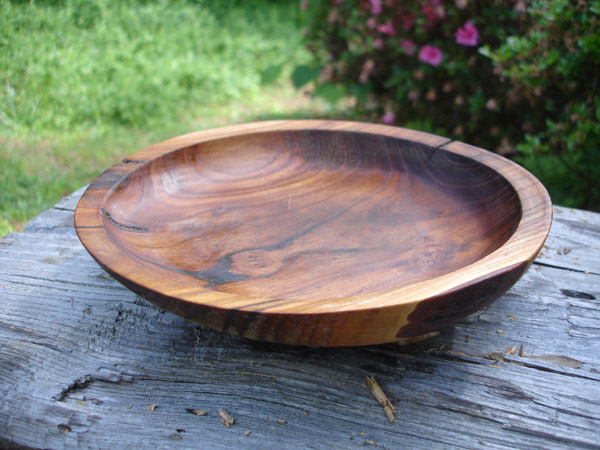
All of my bowls are meant to be used. This bowl probably gets the award for most use. Made from a neighbor's redbud in probably 2003, we use it for holding hors d'oeuvres at parties and general kitchen use as evidence by the many knife marks.
Another aspect to my bowl turning is the steady scholarship I've garnered from visiting museums - notably the Carlos Museum of Archeology at Emory University - looking at the most prevalent shapes favored by various cultures throughout time. The names I have given these shapes are my own to represent what I have seen as the predominant design produced in each culture's 'golden period'. To the right are the basic forms which I turn the most. The following are images pretty much in chronological order of my work over the years.
Some of the following images are a bit blurry, because they were taken at a time when website space was limited and my images were only 400dpi wide. Now that the future is 'wow!', my dpi is 600.

The two on the ends are from a neighbor's redbud tree that came down in the last hurricane. The photo doesn't do the wood justice. There are bright pinks, green, yellow and rich brown pith and veining.
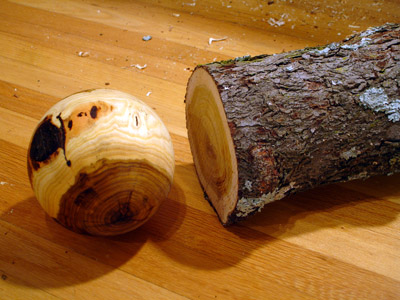
The above bowls were from several years ago, 2002 I think. This sphere and the following images are from late 2008 and January, 2009 from a different redbud tree.
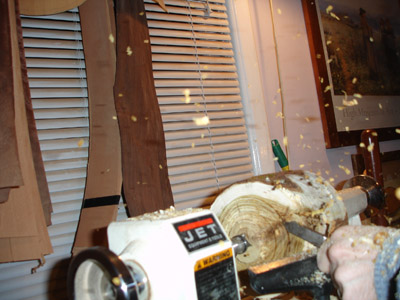
Huzzah ! !
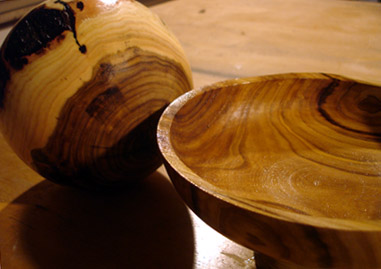
+++++
Wood with a Story.
My experience with the Olmstead red maple was the beginning of a steady
stream of wood that I would collect from all over Atlanta these 12 years.
The following are a few of highlights.
This is a piece of a Magnolia tree that was removed from a property in the Brookwood neighborhood of Atlanta, a neighborhood of exclusive homes around a golf course which was planned in the 1920's. The lot is being developed with a new house in an Arcadian colonial style by my company. I'll be turning a bowl for our client to present to them at the move-in.
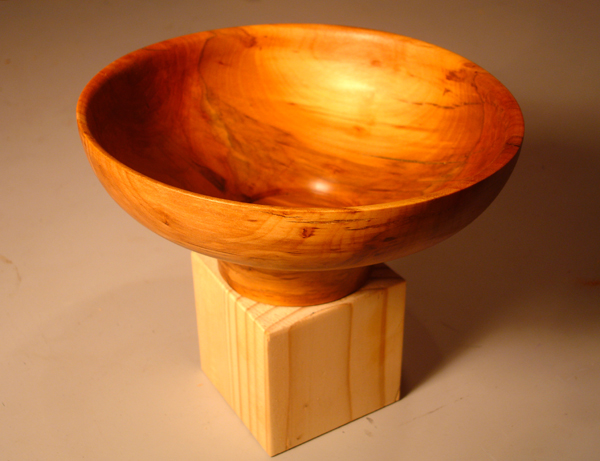
A new bowl of apple wood. This wood came to Atlanta from Michigan through a friend of a friend who made a journey up there last year. Good stuff!
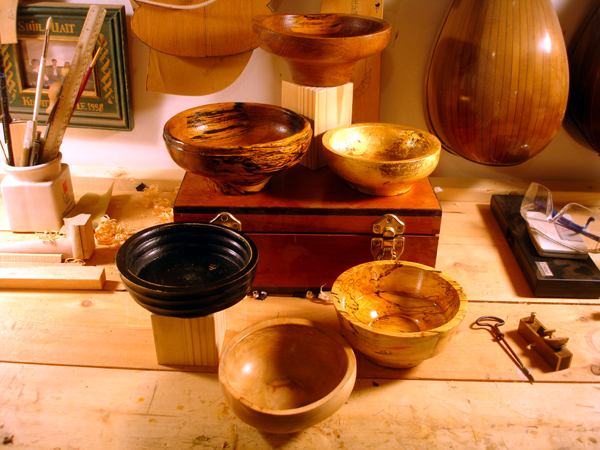
A bevy of bowls that just got finished. Upper left is another "Emory Oak", the front and center is an "Olmstead Park" which warped nicely although it's had to see fron this angle. Upper right is a bowl which I really didn't like the shape of but the rubbed out gold leaf makes it good.
The Emory Oak.
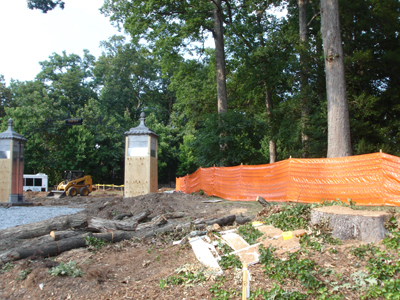
An historic event: the 80 year old white oak at the entrance to Emory University is cut down to make way for the re-directed road which will once again pass through the pillars.
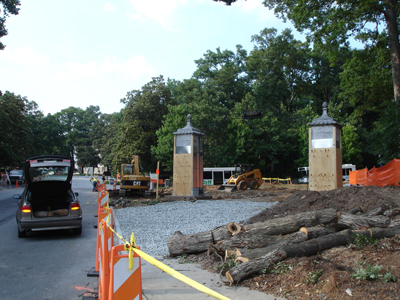
So into my trunk it goes (well, part of it) and. . .
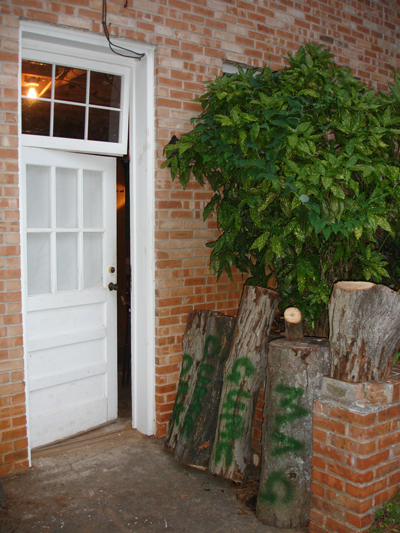
. . .back to the workshop where it will be turned into bowls as a donation to The Alliance to Improve Emory Village and to Glen Memorial United Methodist Church for fundraising efforts. (The big hunk of magnolia has new friends to keep it company for a time)
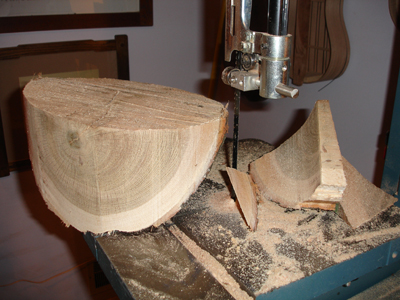
Cutting. . .
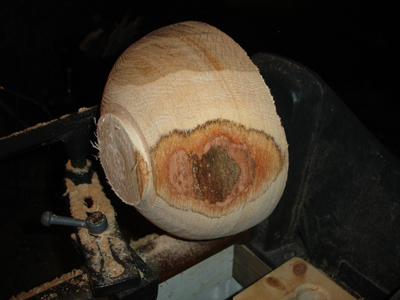
Roughing. . .
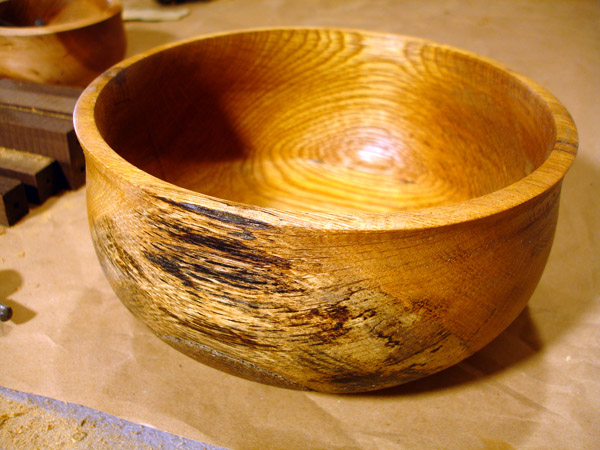
Finished. Love that spalting! just don't breathe while you're tuning.
Following are some progress images of making some smaller bowls from the remaining Emory stock, even more worn from white rot
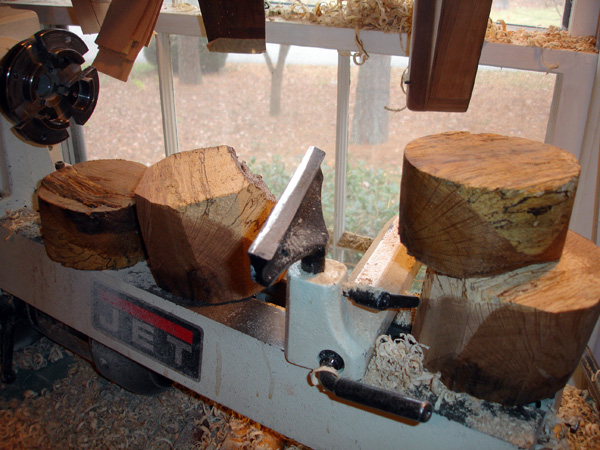
more to come. . .
+++++
Trees I have known.
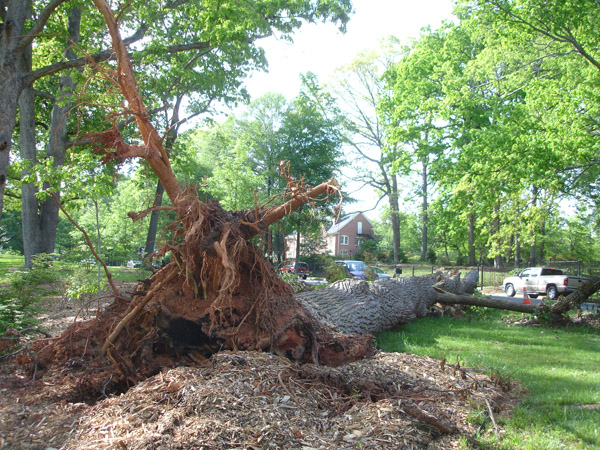
Another Olmstead Park storm victim. I don't think this poplar is big enough to have been planted 100 years ago like the maple I scavenged previously, but it was a signifiant tree and it will be missed. Until I turn it into bowls. The light post and redbud it took out will also be missed.
The following are some images of quiet contemplation.
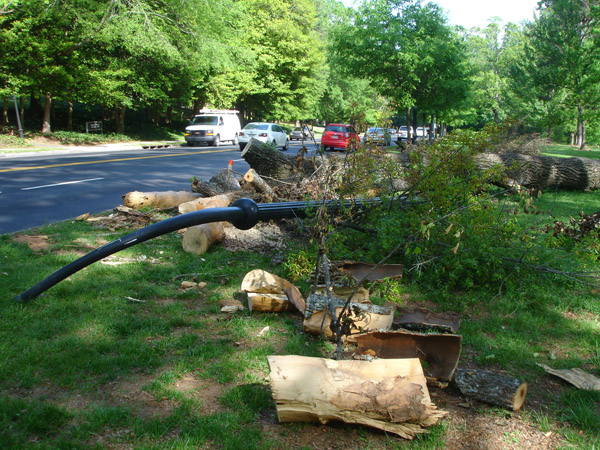
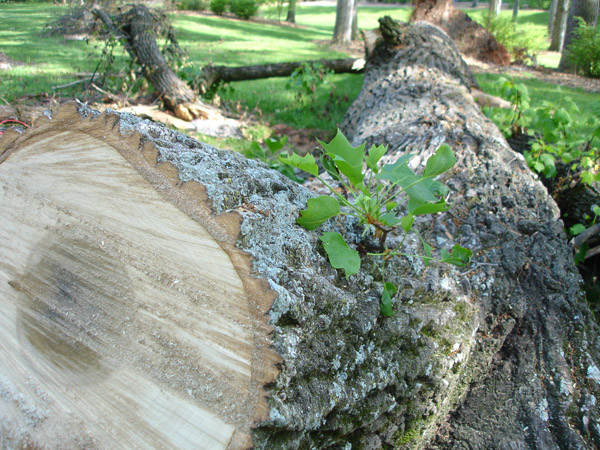
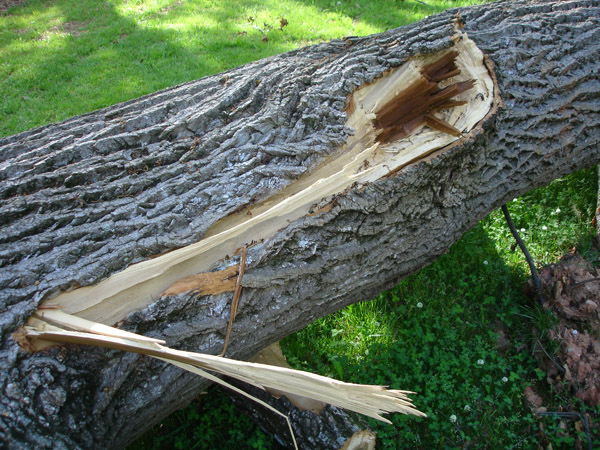
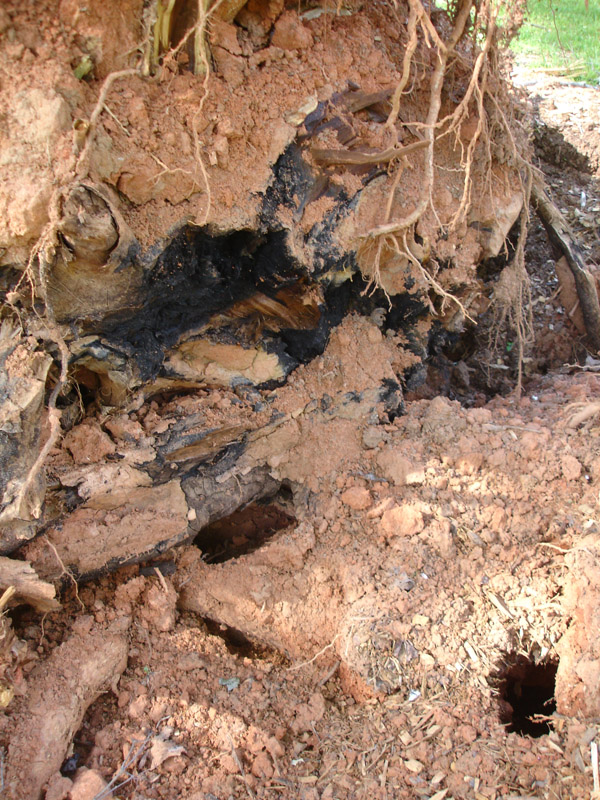
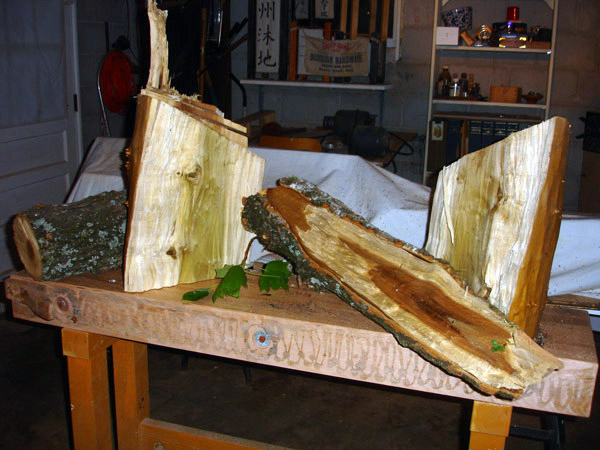
+++++
Another tree down a few days later. This time not in the park but from a residence on South Ponce de Leon and laying into Dellwood Park. It's amazing there are any trees left on Ponce.
The Rhodes Hall Oak.
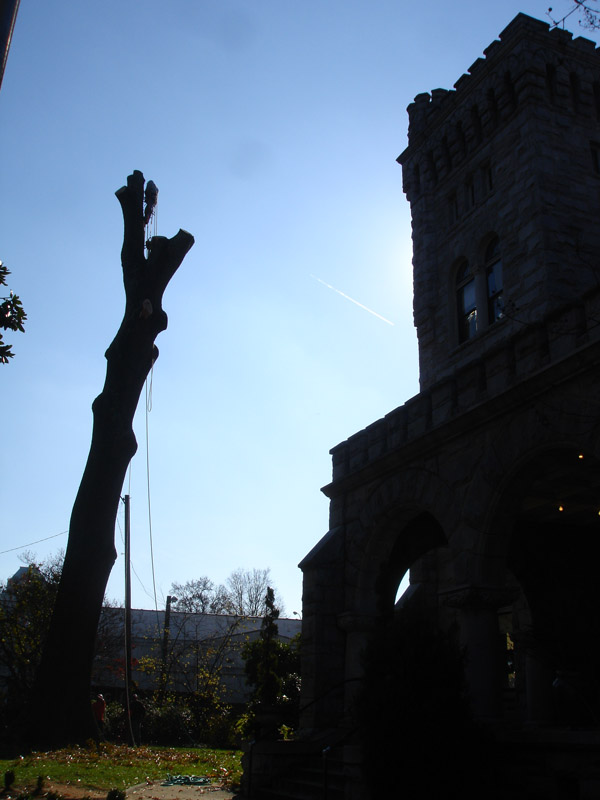
Chance is the mother of opportunity. I was passing by just as the top was falling on this tree in front of historic Rhodes Hall on Peachtree Street. The staff people think it's at least 125 years old, predating the 1904 build of the house. I watched as the trunk was brought down and took some contemplative pictures before hauling off all my car's suspension could bear.
.jpg)
Pulling a guideline to aim the trunk in the desired direction.
.jpg)
.jpg)
If trees could talk
.jpg)
Staff members onlook from a safe distance
.jpg)
Tim-ber, as they say
.jpg)
And down.
.jpg)
A good reason to take a tree down.
.jpg)
The implement
.jpg)
.jpg)
The leaves of change
.jpg)
.jpg)
.jpg)
.jpg)
.jpg)
Into the trunk!
.jpg)
Back home. Hopefully I will get bowls made out of these before the fungus makes food out of them.
.jpg)
Tree climbing spike wound. Philosophize.
.jpg)
The chosen log for the first round with the eye-catchingly cute sprig. And now, every painful detail of making a bowl. . .
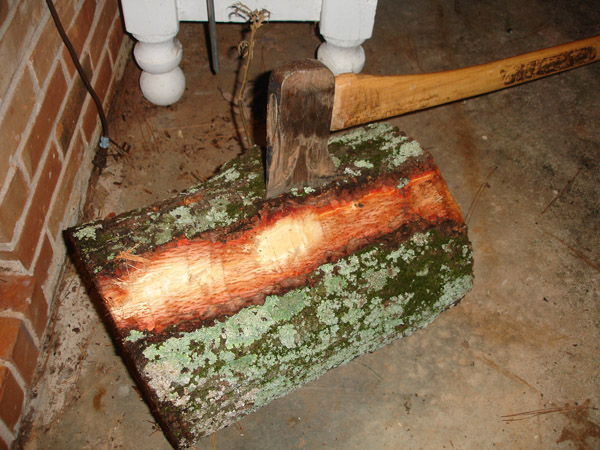
Cut flat with axe for bandsaw
.jpg)
.jpg)
.jpg)
.jpg)
.jpg)
.jpg)
.jpg)
.jpg)
.jpg)
Mounted on the outside lathe, but. . .
.jpg)
It's a little cold out tonight, so inside lathe sounds better.
.jpg)
Outside finished.
.jpg)
Here's the fun part
.jpg)
.jpg)
.jpg)
.jpg)
.jpg)
.jpg)
Finis
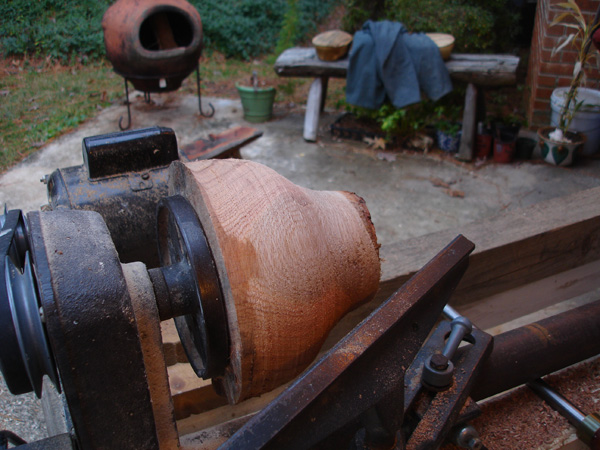
Another bowl, December 2010
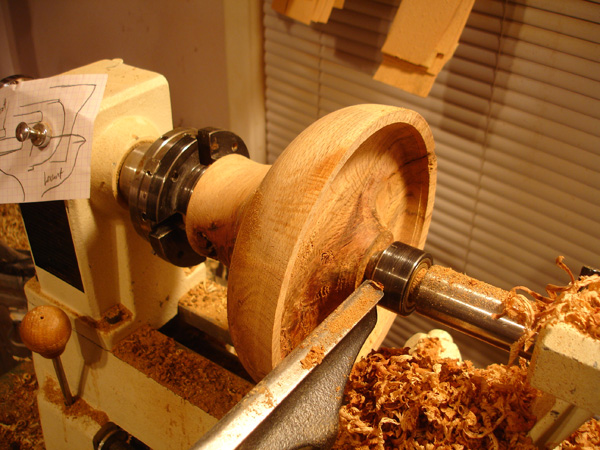
Turning the inside on the inside lathe. This one is so tall, and cutting through a knot so tough that I'm having to stabalize it with the tailstock
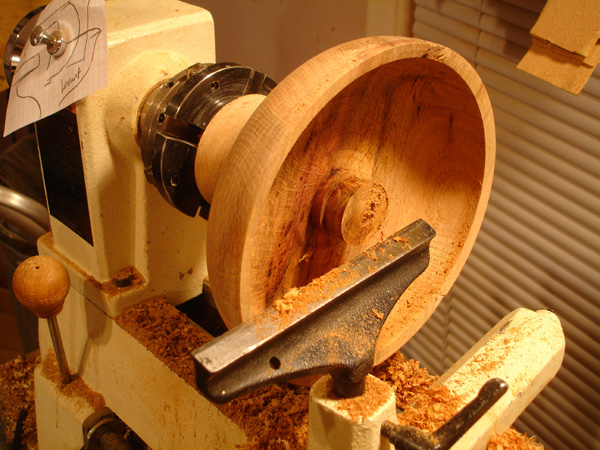
With all removed but the center post, the tailstock can be removed and the post removed.
+++++
Some images taken on a particularly active night of bowlturning on the 'outside lathe'
.jpg)
Tree chunk, meet bandsaw. Bandsaw. . .tree chunk
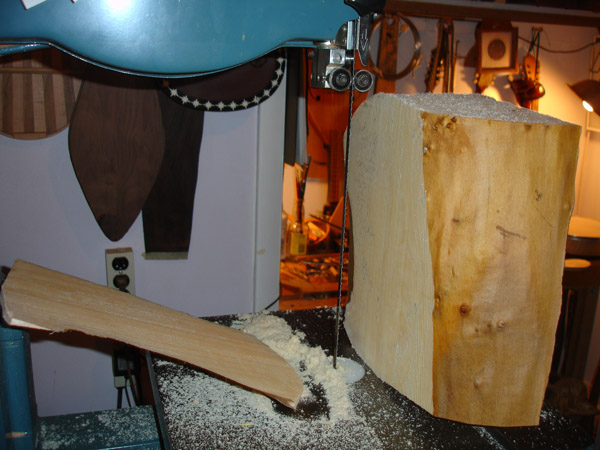
.jpg)
.jpg)
.jpg)
.jpg)
.jpg)
.jpg)
.jpg)
.jpg)
.jpg)
.jpg)
+++++
A power grab of walnut from a house on Scott Boulevard
.jpg)
The stump to the left will be bowls, the logs to the right will be dulcimer parts.
.jpg)
Future dulcimers.
.jpg)
Here come the bowls.
.jpg)
.jpg)
.jpg)
.jpg)
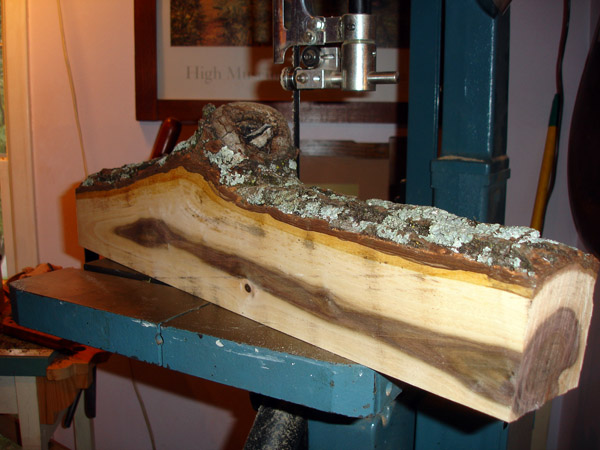
Here come the dulcimers.
.jpg)
+++++
Family Tree.
Summer 2010 saw the removal of three trees from my grandmother's yard. A gigantic maple tree in the front yard near to the house was taken out to stem its destruction by roots of the neighbor's driveway. It had grown quite large for its proxemity to the house. Second was a large pine that was one of three live christmas trees planted in subsequent years in the front yard when I was very young. This one was taken down because it had developed a disease and was starting to go. A similar tradition started when I was in college and we used small Leyland cypress trees later planted along the side property line. The first one had gotten too wolly so she decided to take it down. We asked the tree guys to save two 24" logs from each tree. I shall make bowls out of the maple, which is highly spalted. The cypress also may make nice bowls but the pine will probably be boxes. Following are images of the first round of bowls from the maple.
.jpg)
Doing the outside turning on the outside lathe!
.jpg)
A couple hour's work
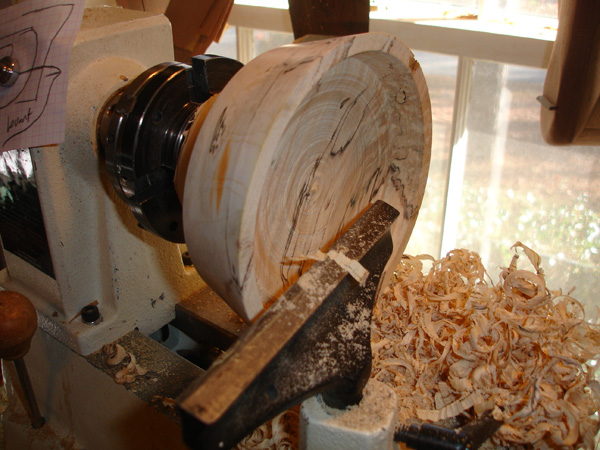
.jpg)
Rough and final inside shape of the first bowl
.jpg)
.jpg)
Looking at the great shavings with black spalting of the second bowl
.jpg)
.jpg)
This little fella was uncovered still alive after months of being sealed in with the wax coating I put on the blanks, not to mention the 1800rpm turning of the outside in one direction and the inside in the other direction. He got put in woodwork vahalla for his tribulations, viz the vast pile of wood shavings in the trash can. For the months that I stored the wood in the basement I heard the chattering of munching teeth and the piles of sawdust below the workhorses where I had suspended the logs for drying. I knew they were in there but there was no getting them out. The chewed a nice array of holes for the finished bowls.
.jpg)
.jpg)
A bowl that has more of a goblet shape.
+++++
A Beechwood bowl.
.jpg)
I'm making this bowl for clients who have christened their new property in Fitzpatrick, Alabama 'Beechwood Farm'. It will be my wedding present to them. Unfortunatly the naming happened after any opportunity to recover beech from the project site. And in truth it was even difficult to track down a good piece of beech here in Atlanta. My friend Richard at Carlton McLendon unearthed a solitary 8/4 board that will work, but I'm having to join it to get the 12" diameter I'm looking for. Never had to do this for a bowl before!
.jpg)
And this is how you attach a foot when you don't have deep-reach clamps.
.jpg)
Shape rough cut on the bandsaw.
.jpg)
Turning the outside shape. Most of the foot is for grabbing when I flip it around to turn the inside and will get trimmed off at the end. Today's music selection for the back patio is Javanese Gamelan. Today's drink is Fog Cutters. It's an unusually warm Saturday in mid-March.
.jpg)
Starting to turn the inside shape. So far no issues with the seam opening up or the piece flying off the foot. Let's hear it for Tightbond II.
.jpg)
The finished bowl with a penetrating coat of mineral oil and one coat of wax. I'll buff it up a bit with another coat or two. Chiminerra already going with the shavings and scraps.
.jpg)
The scraps make a fine fire. Smells good. I may not do any mroe work today.
.jpg)
Contemplation.
.jpg)
The finished bowl.
.jpg)
Looking at the shape. Sitting on cutoffs that will make two other 8" bowls.
.jpg)
Underside showing a wormy bit
.jpg)
I've never really worked with beech before so I didn't know what to expect with the grain. It turned out to have some nice spalting (dark streaks). And the wormholes are always a pleasant surprise.
.jpg)
More back yard contemplation.
.jpg)
Closer.
.jpg)
Two planes that crossed overhead.
.jpg)
Closer still.
+++++
Some Sweetgum bows.
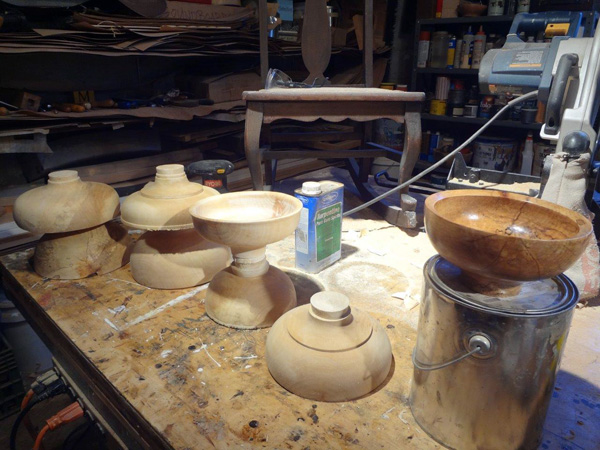
.jpg)
.jpg)
.jpg)
+++++
The Museum Collection.
I have begun a series of bowls inspired by the pottery in the collection of the Michael C Carlos Museum of Emory University. I am a frequent visitor and over the years have made notes on the shapes to be found across the four major cultures they represent: Egyptian, Mezzo-American, Greek and Roman.
Click here for my flyer on this collection
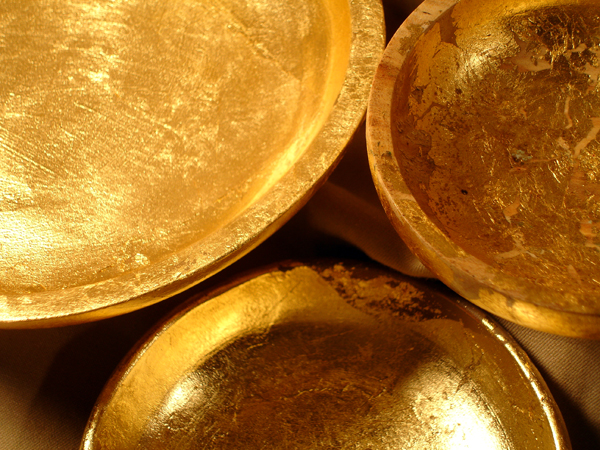
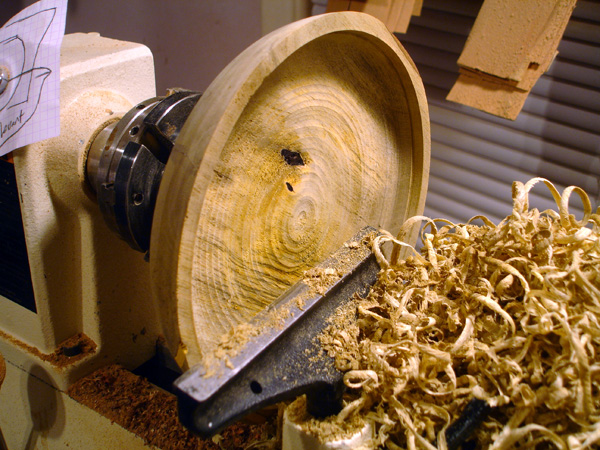
The wood I'm using for these bowls is persimmon, from a tree taken down at a friend's house in Decatur. It's very hard and dense and can have some bright yellows and orange with dark brown inclusions, but it quickly ages to a rather dull mousy brown. So perfect for covering with gold leaf!
+++++
.jpg)
Chinese
.jpg)
Ancient Greek
.jpg)
Tribal
.jpg)
Ancient Greek (Tulip)
"Here in the moist and shaded gorge they found a setting to their liking"
-Edwin Way Teale
"One of my wishes is that those dark trees, /So old and firm they scarcely show the breeze, /Were not as 'twere, the merest mask of gloom, /But streached away unto the edge of doom."
-Robert Frost
